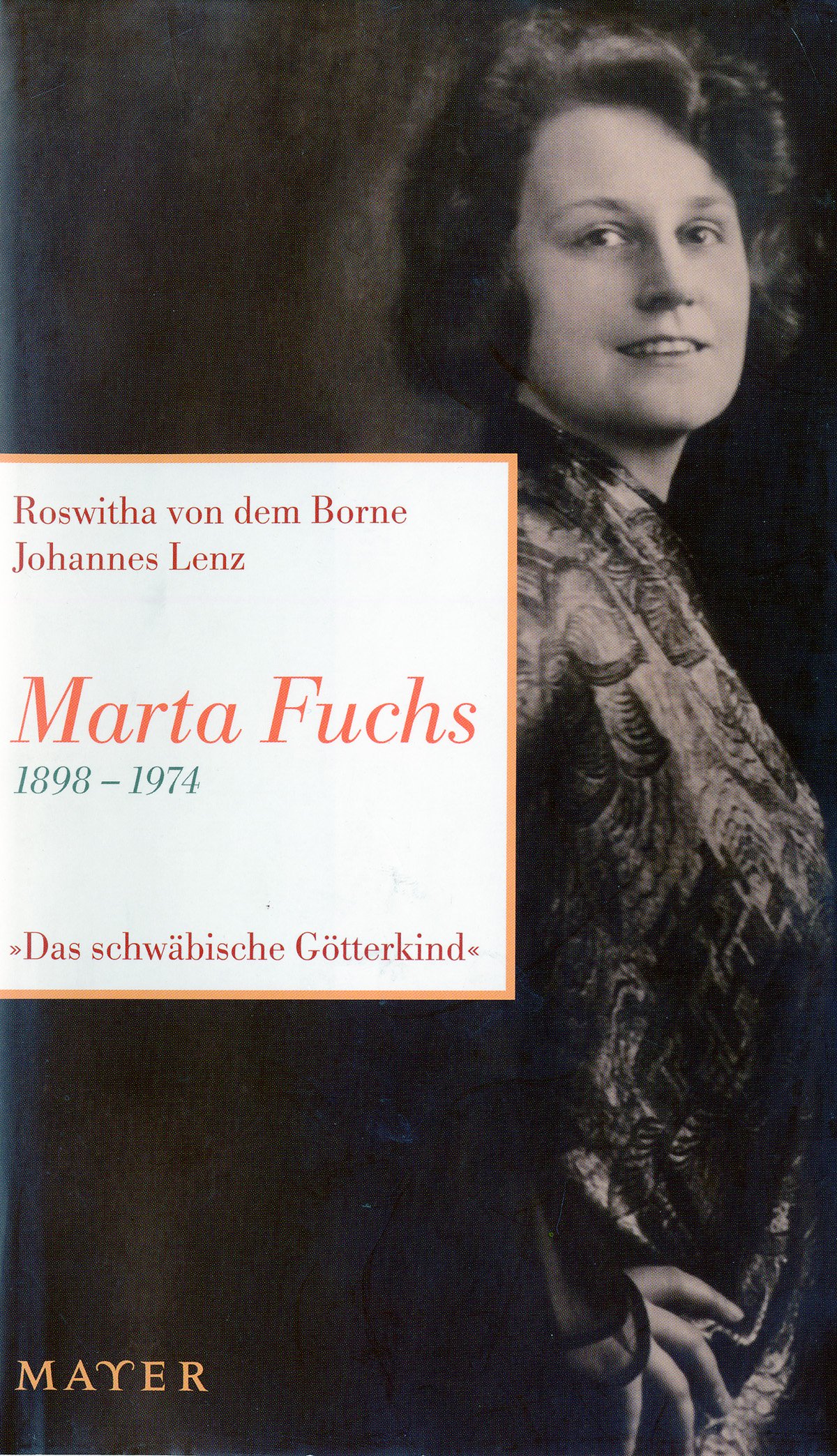
MARTA FUCHS “ Das Schwabische Gotterkind” by Johannes Lenz and Roswitha von dem Borne

2010, Verlag Johannes Mayer, Stuttgart
ISBN 978-3-86783-010-2
Why did it take me five years and sheer coincidence to discover this fairly interesting biography –published in 2010 - of a forgotten operatic legend only kept alive by a Preiser CD release? After all Fuchs was one of the great Wagnerians of the previous century; yet this gripping and entertaining publication seemed to have been ignored by the so called specialized media. High time indeed to put the record straight especially as the book is still available and in spite of some shortcomings a must-have to the vocal buff and the Wagnerian in particular.
Marta Fuchs (1898 – 1974) grew up in an artistic family, her musical father was a decorative painter and member of the board of the guild in Stuttgart. In later years he put his efforts into managing his daughter's career. There was also a son who was killed at age 21 in the first stages of world war one.
Marta attended the Königin-Katharina-Stift High School in Stuttgart and studied at the Hochschule für Musik und Darstellende Kunst, the College of Music in Stuttgart. In 1923 at the age of 25, she began her career as a mezzo singing concerts and oratories. After undergoing further voice and drama training in Stuttgart, she made her debut as Cornelia in Handel’s Giulio Cesare at the state theatre in Aachen in 1928. Other roles included Eboli, Ortrud and Azucena amongst others.
By that time Marta Fuchs had already become an active member of the Christian Community and a member of the Anthroposophical Society.
In 1930 she was engaged by the Staatsoper in Dresden. After retraining –at the insistence of Fritz Busch - from mezzo to dramatic soprano, she sang, among other parts, the Marschallin, Isolde, Brünnhilde, Arabella, and Fidelio. From 1935 onwards she was also part of the ensemble of the Berlin State Opera and the Deutsche Oper Berlin and appeared as guest in Amsterdam, Salzburg, Prague, Paris, London, Florence, Rome and Vienna.
From 1933 to 1942, she was an important figure at the Bayreuther Festspiele, where she sang Isolde, Kundry and especially Brünnhilde. By then she also owned a car which she drove herself.
Fuchs remained distant from the National Socialist regime and she used her reputation in petitions to allow the continuation of anthroposophical work in Germany. On 25 June 1941 she used her influence on behalf of the Christian Community, whose priests had been interned, property confiscated and further work prohibited.
She was one of the very few who refused to sign the anti-Busch petition set up to remove Busch from Dresden in March 1933.
Listen to Fuchs and Hotter in Walkuere
Listen to Fuchs and Melchior in Walkuere
Furtwaengler wrote after one of the Isoldes on 3 February 1944 in Berlin: Such a beautiful rendition and such a transfiguration in the death through love he had never experienced.
After the destruction of Dresden on 13 February 1945, she fled to her house on the Tegernsee, then to Stuttgart where she gave guest appearances at the Stuttgart Opera, at conferences of the Christian Community and in 1948 at the conference for Waldorf teachers.
She died in her small room in the old-age home in Stuttgart-Sonnenberg on 22 September 1974.
This 374 page book faithfully and lovingly retraces her life and career through letters, photos, reviews, playbills, contracts, telegrams and other memorabilia perhaps stressing the “Christian aspect” a bit too much for the opera devotee but then it was an important factor in her personal life which couldn’t be ignored. On the other hand it is also clear that the authors didn’t have access to a lot of material. Both authors are not professionally involved in music, one is a priest and the other mainly a lecturer of culture related topics except music so a few errors occur : Friedrich Schorr is referred to as one of the most important Wagnerian tenors (sic) of his era on page 109 and also the bass Kurt Bohme becomes a tenor on page 113.
The book has many illustrations which add an extra quality. An index is incluced and so is a discography. The role survey though containing her main repertoire is sadly enough incomplete. Still the book is a respectable memento of a once first-rate singer.
Rudi van den Bulck